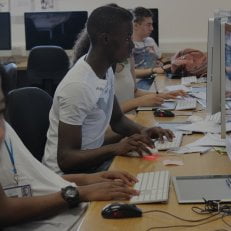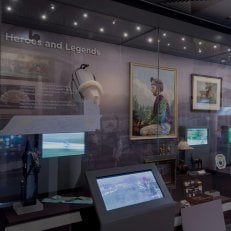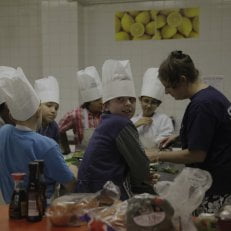Coping with Covid-19 in the arts and heritage sector
Today, museums and galleries in England wait to hear if they can reopen from 4 July. The arts and heritage sector across the UK has been hit hard by Covid-19. Galleries, theatres, heritage sites, visitor attractions and museums have had to close their doors, losing vital income. Emergency funds have been set up and distributed – the Arts Council England has made £160 m available – but how is it for small and medium arts and heritage organisations coping with Covid?
Craigmyle has been speaking to clients and contacts to look at how they are coping and the questions they are thinking about as they develop ‘recovery’ plans. Here are some of the common and most pressing issues:
Covid concerns
- With doors closed, the most pressing issue for organisations is the immediate and ongoing loss of income. No income from ticket sales, nor from the vital secondary spend – cafes and gift shops that boost spend per visitor. Uncertainty around when the guidelines will be relaxed has made planning very difficult.
- The furlough scheme has thrown a life line to organisations in the short term. Some staff maybe wondering how the transition back to work will go. For many organisations with fragile cash flow the furlough scheme assistance is merely delaying a crisis on staff costs. When the scheme ends, there will be some tough decisions for many.
- Arts organisations in particular are dependent on armies of hard-working freelance artists and creatives, with many on short term contracts for the duration of a particular project or show. There are many indications that those people have fallen through the cracks of the government support schemes, even the support for the self-employed. How will that workforce come through this period? How can those people and their families navigate the uncertainties and financial restraints of ‘recovery’?
- What do we do during shutdown? Organisational responses have varied enormously. There’s been some amazing and uplifting free digital content, with major organisations across the globe putting out their back catalogues of streamed material. For small and medium size organisations, it is very hard to compete and even more difficult as a means of realising any income. Many have felt that they cannot compete.. Interestingly, some have focused on how to connect audiences with real things, as an antidote to the 24/7 screen time. At an existential level, the flurry of free digital content poses the question: when and how will people be persuaded to come back when they’ve experienced such high-quality content online, from the comfort of their sofas?
Focus on finances
- Emergency funding is available but accessing it is a challenge for organisations that are not front-line charities. Most organisations have turned to existing supporters – making emergency appeals, asking for pledges earlier.
- Fundraisers are being asked to review and adjust their fundraising plans, with a focus on developing a recovery plan to address the inevitable deficit.
- Cultural organisations in Europe are beginning to re-open with social distancing measures in place. They are able to do so viably because government / state subsidy is far greater than in the UK. Here we are very likely to lag behind because our cultural sector is so highly dependent on earned income.
- In the longer-term, although injections of emergency cash such as the Arts Council’s support programme is very welcome, unless there is investment from government, there will be significantly less in pots for future years, which will have a knock-on effect for the sector, and for individual organisation’s survival.
Post lockdown priorities
Despite all the uncertainties, arts and heritage organisations are now planning ahead for post Covid lockdown. Much of this forward planning comes back to the challenging and essential question: how will we operate when we reopen? Key issues include:
- Practicalities of how to manage visitors and volunteers: How to reopen and work safely? Thinking about toilets, cleaning, interactive displays, one-way systems to control the flow of people, as well as the bottom line of: are people going to want to visit?
- How to engage people: Some organisations, such as museums, are asking themselves how they can make visits interesting/interactive with social distancing and sanitisation measures in place? With reduced visitor numbers there may be an opportunity to have tailored quality activities with smaller groups and specific hard to reach audiences.
- How to balance books: if arts organisations are only able to sell, say, 1 in 4 seats, how can productions be viable? Similarly, potential restrictions on seating would make venue hire unfeasible, closing off a vital income generation stream and sending touring companies to the wall. If more staff are required at visitor destinations to manage fewer visitors, will the numbers add up? With lower visitor numbers and likely reduced secondary spend (fewer covers in cafes/restaurants), many organisations will continue to face financial problems.
- Long-term impact: There is an awareness that the repercussions will last much longer than social distancing. There will be a longer-term effect on income. There is also likely to be a longer-term effect on impact – whether in terms of the number of exhibitions/productions or the breadth of organisations’ learning offer.
There is much for arts and heritage organisations to be thinking about, and many Covid challenges to overcome as they reopen and recover. Uncertainties remain for what post Covid society will look like, but the need for arts, culture and heritage is as strong as ever – as a source of inspiration and creativity, as a boost to health, wellbeing and social integration, an important part of the economy, and as a way for the UK to process and respond to these unsettling times.
Read Craigmyle’s thoughts on planning for post-Covid fundraising.





